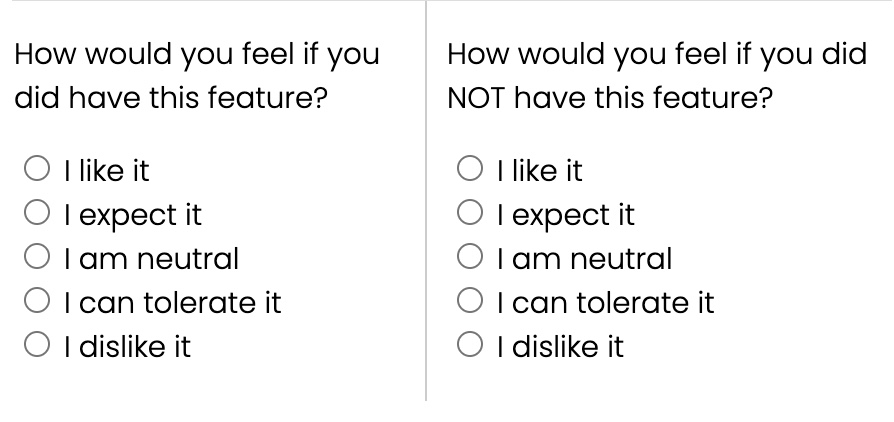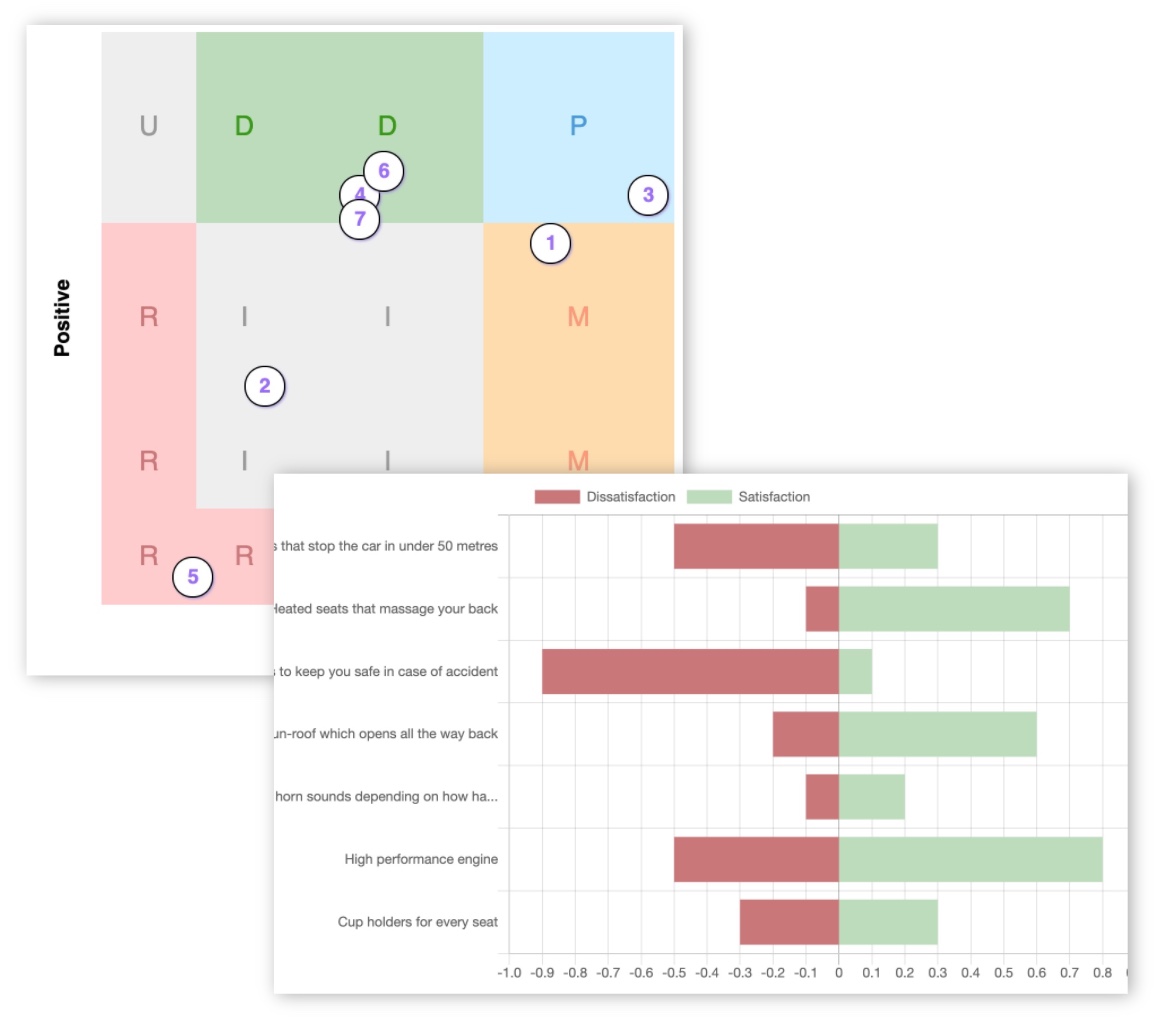Understanding the Kano questions format

The Kano questions format is a specific way of asking questions that is used in the Kano framework to gather information about customer needs and satisfaction. The Kano survey tool is a tool used in product development and management to understand the factors that determine customer satisfaction. It is based on the idea that customer satisfaction is not always directly related to the quality or performance of a product, but rather a combination of factors including the presence or absence of certain features, the performance of those features, and how well they match the customer's expectations.
The Kano model identifies three main categories of product features: must-have, performance, and delighter. There are others but we'll leave those for now. Read a complete description of how Kano works. The Kano questionnaire is a tool used to gather information about which features fall into which category, and how important those features are to the customer's satisfaction.
The Kano questionnaire uses a specific question format in order to gather this information. The questions are designed to be simple and straightforward, and they are usually presented in a multiple-choice format. This allows the customer to quickly and easily provide their feedback without having to write lengthy responses.
The most common question format is “How would you feel if this feature were present / absent?” with the answer options as:
- “I dislike it” - the most negative response.
- “I can tolerate it”
- “I am neutral”
- “I expect it”
- “I like it” - the most positive response.
Another version of the answer options for the standard Kano model survey question are for a slightly different phrasing of the question - instead we ask “How necessary is this feature for you to be satisfied with the product?”, and offer the options:
"Not necessary" - the most negative option.
"Somewhat necessary" - not essential.
"Necessary" - necessary, but not particularly noteworthy.
"Very necessary" - customer would be disappointed if it was not present.
"Indifferent" - no strong opinion.
These answer options are used to help classify the features of a product or service into the three categories of the Kano model: must-have, performance, and delighter. Read more about the Kano categories matrix. Features that are rated as "not necessary" or "indifferent" are generally considered to be must-have or performance features, while features that are rated as "somewhat necessary," "necessary," or "very necessary" are considered to be delighter features.
The specific question format of the Kano questionnaire is used because it is effective at gathering the information needed to understand the customer's needs and expectations. By using simple and straightforward questions, the Kano questionnaire is able to quickly and efficiently gather a large amount of information from a large number of customers. This information is then used to identify the must-have, performance, and delighter features of a product, and how important those features are to the customer's satisfaction.
There are several additions to the Kano survey format that someone could try if they wanted to make a Kano survey easier or more engaging to fill in. Here are a few examples:
Using a sliding scale to rate the importance of a particular feature. This allows the customer to quickly and easily indicate their level of satisfaction with a feature by dragging a slider in an interactive way.
Using open-ended questions to gather detailed feedback about a particular feature. This allows the customer to provide more detailed and specific feedback about their needs and expectations.
Using a combination of closed-ended and open-ended questions to gather a mix of quantitative and qualitative data. This allows the survey to gather both broad and specific information about customer needs and satisfaction.
Using images or videos to illustrate the features being surveyed. This can help the customer to better understand the features being surveyed and provide more accurate and detailed feedback.
Using branching or skip logic to customise the survey for each individual customer. This allows the survey to ask different questions based on the customer's previous responses, providing a more personalised and engaging experience.
Overall, there are many variations on the Kano framework questionnaire format that could be used to make a Kano survey easier to fill in. The specific variations will depend on the needs and goals of the survey, as well as the preferences of the customers being surveyed.
In summary, the Kano model question format is a specific way of asking questions that is used in the Kano questionnaire to gather information about customer needs and satisfaction. The Kano framework uses simple and straightforward questions to quickly and efficiently gather a large amount of information from a large number of customers. This information is then used to identify the must-have, performance, and delighter features of a product and how important those features are to the customer's satisfaction, which feeds into product management strategy with Kano model.
Kano Model surveys are an amazing tool for validating your ideas and your assumptions. Click the button below to get started:
Create your first survey now

 Give Feedback
Give Feedback
